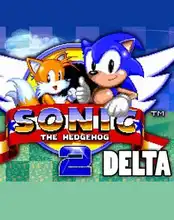Stepping back into the pixelated worlds of our youth is always a blast, but sometimes those rose-tinted glasses can't hide the rough edges. Maybe the graphics haven't aged gracefully, a nasty bug still lurks, or you just wish there was more to explore. This is where the incredible world of Fan Modification comes in, a vibrant testament to community passion that keeps our beloved retro games not just playable, but often better than we remember.
It's not about changing the core magic, but enhancing it. Think of it as a loving restoration project, undertaken by dedicated fans who pour their skills and free time into polishing gems from gaming's golden age. These aren't official updates; they're labors of love from the community itself.
What Exactly is Fan Modification in Retro Gaming?
At its heart, fan modification (or "modding") is when players create unofficial alterations or additions to a game. For retro titles, this often means fixing problems the original developers left behind, or even adding features they couldn't back in the day due to technical limits or time constraints.
It's a powerful form of game preservation and evolution, driven purely by passion for the source material.
Why Do Classic Games Need Fan Mods?
While nostalgia is strong, let's be real: some old games have issues. Fan mods step in to tackle common problems like:
- Compatibility: Getting games designed for Windows 95 or DOS to run smoothly on modern systems (shoutout to tools like DOSBox which mods often build upon!).
- Bugs & Glitches: Squashing those annoying bugs that were never patched.
- Graphics: Implementing higher resolution textures, widescreen support, or improved models to make visuals pop a bit more on modern displays.
- Gameplay & Content: Adding new levels, characters, items, or even entire storylines. Sometimes it's just balancing tweaks or quality-of-life improvements.
- Fan Translations: Making games that were only released in one language accessible to a global audience.
These community efforts ensure that games you might pick up on platforms like GOG or dust off from your old CD collection are not just playable, but genuinely enjoyable today.
Awesome Types of Fan Mods You Might Find
The creativity of modders knows no bounds. Here are a few common types of fan modification that breathe new life into classics:
- High-Resolution Texture Packs: Replacing blurry old textures with crisp, detailed ones.
- Widescreen Patches: Updating games designed for 4:3 aspect ratios to properly display on modern 16:9 or 16:10 monitors.
- Community Patches: Unofficial patches that fix bugs, improve stability, and sometimes restore cut content.
- Source Ports: Re-implementing a game's engine from scratch, often adding modern rendering features, better performance, and easier modding capabilities (think classic Doom or Quake source ports).
- Total Conversions: Massive mods that often create an entirely new game using the original game's engine and assets as a base.
Finding and Installing Your First Retro Game Mod
Ready to dive in? Finding mods usually involves a bit of searching:
- Game-Specific Communities: Many classic games have dedicated forums or websites where modders gather and share their work.
- Modding Databases: Sites like ModDB or Nexus Mods host mods for a wide variety of games, both old and new.
- Digital Storefronts: Sometimes, platforms like GOG or Steam will highlight or even include community patches or fan-made compatibility fixes with the game purchase.
Installation varies wildly depending on the game and the mod. Some are simple drag-and-drop affairs, while others might require specific tools or command-line tinkering. Always read the mod's instructions carefully!
The Spirit of Fan Modification
More than just technical tweaks, Fan Modification represents the enduring love for video games. It's about communities coming together to preserve history, share skills, and collectively enhance experiences for fellow fans. It's a powerful reminder that the impact of a great game lasts long after the credits roll and the developers move on.
So next time you revisit a cherished classic, take a moment to see if there's a vibrant modding community keeping it alive. You might be surprised at how much more there is to discover!
Fan Modification FAQ
Q: Are fan mods legal? A: Generally, creating and distributing mods is a grey area. As long as the mod doesn't include copyrighted assets from the original game developers (unless the developers allow it) and requires the user to own the original game, they are often tolerated by publishers, especially for older titles. Distributing the full game or significant parts of it with the mod is usually illegal.
Q: Can mods break my game? A: Yes, absolutely. Mods modify game files, and sometimes they can conflict with each other or be incompatible with your game version. Always back up your game files before installing mods, and follow installation instructions precisely.
Q: Where are the best places to find retro game mods? A: Start with game-specific fan communities and forums. Websites like ModDB and Nexus Mods are also great resources, though they cover both retro and modern games.
Q: Are fan mods free? A: Almost universally, yes. Fan mods are created by volunteers out of passion and are shared freely with the community.

